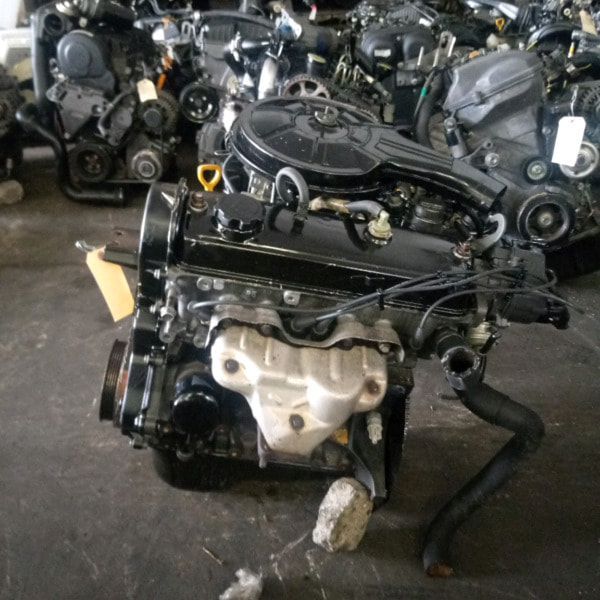Toyota Tazz: A Look at Its Popularity and Longevity in the Automotive Industry
Toyota Tazz: A Look at Its Popularity and Longevity in the Automotive Industry
Blog Article
Discover the most recent Fads in Engine Technology Through Tazz
In the swiftly progressing landscape of vehicle innovation, Tazz stands at the forefront, highlighting significant advancements in engine systems that focus on both technology and sustainability. From crossbreed engines that optimize gas effectiveness to the development of hydrogen fuel cells, the fads shaping modern powertrains are not just improving performance yet likewise dealing with essential environmental obstacles.
Hybrid Engine Innovations
Hybrid engine technologies represent a pivotal change in automobile modern technology, integrating the advantages of interior burning engines with electrical propulsion systems. This combination not just improves gas effectiveness yet also lowers discharges, conference progressively stringent ecological regulations. By using both power sources, hybrid engines can maximize performance, providing power when required while saving gas during much less requiring driving problems.
Current improvements in crossbreed technology consist of improvements in battery effectiveness and regenerative stopping systems. These innovations permit better energy healing throughout slowdown, which can be redirected to help in acceleration or power auxiliary systems. Moreover, manufacturers are concentrating on light-weight products and portable designs to optimize the efficiency of hybrid powertrains.
The development of plug-in crossbreeds has actually additionally expanded the market, enabling motorists to charge their automobiles making use of standard electrical outlets. This feature typically enables considerable all-electric variety, additional lowering reliance on typical gas. tazz. As the auto sector proceeds to advance, hybrid engine modern technologies are anticipated to play a crucial role in bridging the gap in between standard lorries and totally electric designs, offering a transitional solution that accommodates varied customer requirements and preferences
Advancements in Electric Powertrains
The automobile landscape is rapidly evolving, with electrical powertrains arising as a leading force in sustainable transport. Breakthroughs in electric car (EV) technology are dramatically boosting customer, effectiveness, and performance experience. Trick advancements include renovations in battery chemistry, which have raised energy thickness, minimized charging times, and expanded general battery life.
Solid-state batteries, for instance, assure to transform the marketplace by offering better security and performance contrasted to standard lithium-ion cells. Furthermore, innovations in regenerative braking systems are making it possible for cars to recuperate power during slowdown, adding to total efficiency.
In enhancement to battery modern technology, electric motor styles are coming to be more advanced. Technologies such as incorporated electric motors and advanced thermal monitoring systems are assisting to maximize power distribution and minimize weight, inevitably boosting vehicle characteristics.

Jointly, these advances emphasize the commitment to transition towards cleaner, much more efficient transportation solutions, positioning electrical powertrains at the leading edge of automotive development.
The Surge of Hydrogen Gas Cells
Progressively, hydrogen fuel cells are obtaining grip as a practical choice to conventional interior burning engines and battery electrical automobiles. This innovation harnesses the chemical power saved in hydrogen, converting it right into electricity via an electrochemical reaction with oxygen. The key result of this process is water, making hydrogen gas cells an eco-friendly alternative with no exhausts at the tailpipe.

Automakers are increasingly investing in hydrogen fuel cell modern technology, recognizing its capacity for long-range applications and rapid refueling abilities that rival conventional fuels. In addition, fields such as sturdy transport and public transit are specifically appropriate for hydrogen gas cells, where battery electric solutions might fail because of weight and variety limitations.
As study and investment proceed to broaden, hydrogen fuel cells are positioned to play a considerable duty in the future landscape of tidy transportation find this and energy services.
Enhancements in Internal Burning Engines
Developments in internal combustion engine (ICE) innovation are changing traditional automobiles to satisfy modern environmental criteria and efficiency expectations. Among one of the most significant improvements includes the assimilation of innovative fuel injection systems. These systems enhance the air-fuel combination, improving burning efficiency and causing minimized emissions. Direct fuel injection, as an example, allows for far better atomization of fuel, causing even more complete combustion and improved power output.
Additionally, turbocharging has gotten importance, permitting smaller sized engines to supply greater performance without the weight of bigger engines - tazz. This innovation not only boosts efficiency but also contributes to lower fuel intake. Variable valve timing systems are also being refined, enabling engines to adapt to various driving conditions for boosted torque and responsiveness
Furthermore, making use of lightweight products in engine building is coming to be conventional, further site boosting gas efficiency by lowering total vehicle weight. Engine control systems (ECUs) are increasingly innovative, making it possible for real-time modifications that maximize efficiency and exhausts.
These improvements jointly represent an essential change in ICE technology, lining up with global sustainability objectives while still giving the performance motorists expect from their automobiles. As the industry evolves, these enhancements continue to form the future of typical automotive engineering.
Future Fads in Engine Performance
Considerable innovations in engine efficiency are expected as makers concentrate on incorporating sophisticated technologies to meet rigid ecological regulations and customer needs. The change towards electrification, crossbreed systems, and alternative fuels is reshaping the vehicle landscape, driving advancements that improve fuel economic climate and minimize exhausts.
Among the crucial fads is the application of innovative products and making techniques. High-strength alloys and light-weight compounds add to reduced lorry weight, therefore enhancing overall performance. In addition, the adoption of turbocharging and variable valve timing innovations permits for enhanced power result from smaller sized engines, even more enhancing gas economic situation.

Final Thought
Developments in crossbreed engine systems, electric powertrains, and hydrogen fuel cells show a dedication to minimizing emissions while improving efficiency. Enhancements in interior combustion engines and an emphasis on lightweight materials add to total engine performance.
From crossbreed engines that enhance fuel performance to the emergence of hydrogen gas cells, the fads shaping contemporary powertrains are not only boosting efficiency yet additionally addressing vital environmental challenges.Hybrid engine developments represent a critical change in automotive innovation, incorporating the advantages of inner combustion engines with electric propulsion systems.Additionally, turbocharging has actually gained prestige, permitting smaller engines to deliver higher performance without the weight of bigger engines. Additionally, the adoption of turbocharging and variable valve timing technologies permits for improved power result from smaller engines, better enhancing fuel economic climate.
Renovations in internal combustion engines and a focus on lightweight materials add to general engine effectiveness.
Report this page